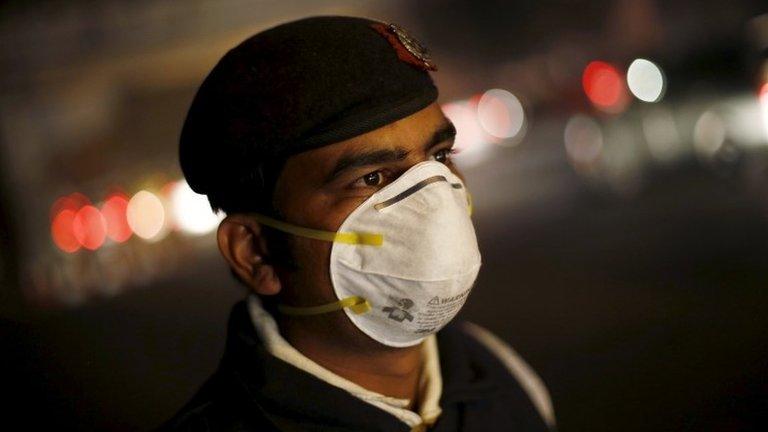Fewer cars, more smog: Delhi policy fails to dent pollution
- Published
Delhi's 'odd-even' car policy
The traffic figures suggest Delhi's radical scheme to cut pollution is working to cut congestion but is it making the city's air any less toxic?
According to my own, admittedly unscientific survey the answer would seem to be a very clear no.
The new year saw the introduction of what the authorities in the Indian capital call an "odd-even" number plate scheme. It is a pretty simple idea: number plates that end in an odd number can only drive on odd-numbered days, even numbers on even-numbered days.
In theory that should halve traffic numbers, but a host of exemptions means many more than half the nearly nine million vehicles registered in the city can still take to the roads every day.
Nevertheless congestion is noticeably down, and very pleasant that is too.
But sadly the same doesn't appear to be true of air pollution - the target of the new restrictions.
'Worse than Beijing'
The scale of Delhi's pollution problem was put in stark relief in early December when Beijing - the notoriously smog-bound Chinese capital - declared its first ever red alert for pollution.
The Chinese authorities issued an alarming citywide health warning. Beijing residents were advised to wear masks and avoid any strenuous exercise, while many schools and industrial operations were shut down.

Vehicle owners have complied with pleas to reduce the number of cars on the road
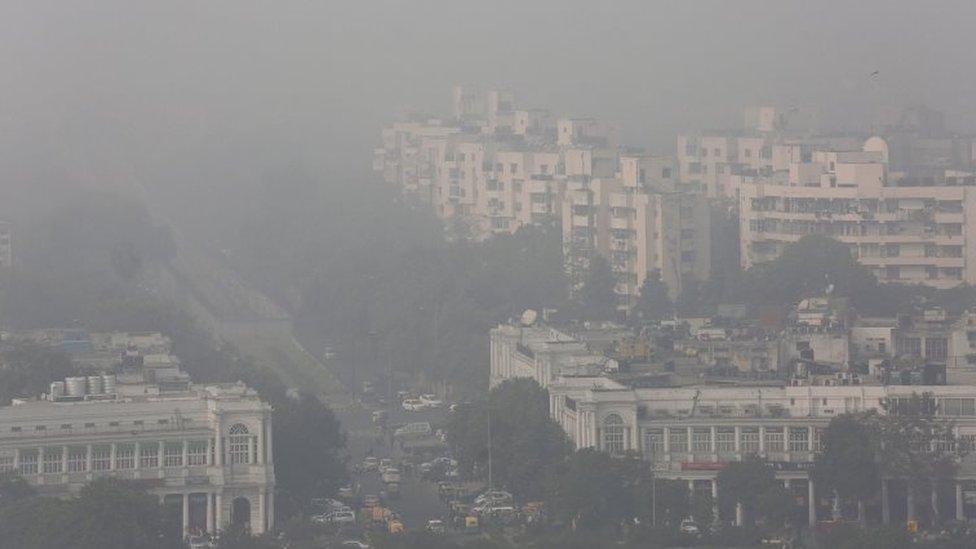
Delhi had pollution levels some 50% higher than Beijing in December - 15 times the safe limit
I had just bought myself a portable air quality meter and wanted to know how the city I had recently moved to with my wife and four young children compared.
The results were very shocking. Delhi had pollution levels some 50% higher than Beijing - 15 times the safe limit - yet there had been no public warnings of the health dangers, and no restrictions imposed of any kind.
In that context the odd-even scheme - and the clutch of other restrictions on cars and trucks in the city - are great news for Delhi residents like us. At last the city is actually doing something.
But is it working?
'Airpocalypse'
In the weeks before Christmas I went out to the epicentre of what Twitter has dubbed Delhi's "airpocalypse" - the snarl of motorways around Anand Vihar, on the edge of the city.
The air quality meter that was recently installed here regularly records figures for the most dangerous particulate pollution - the miniscule PM2.5 particles - way in excess of the 25 micrograms per cubic metre the World Health Organization has decreed is the safe limit.
On the morning I visited, my little pollution monitor recorded just over 400 micrograms of PM2.5 particles per cubic metre - that's 16 times the limit.
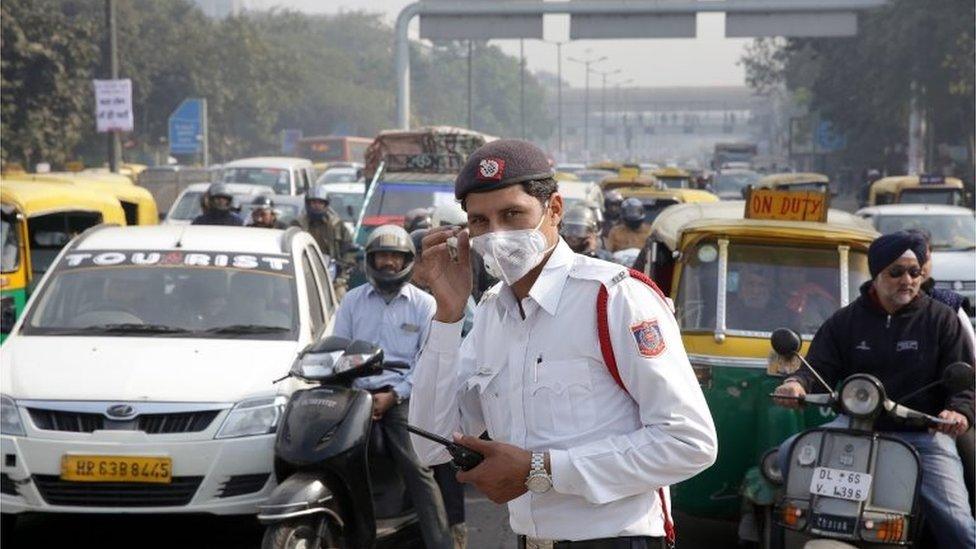
Delhi has fewer traffic jams, but has seen no change in pollution
The new restrictions came in with the new year and early results suggest they have successfully cut car usage. The police report that they have only caught a couple of thousand people evading the scheme, while Delhi's transport authority says that 700,000 additional public transport journeys were made on the first full working day.
Certainly there were many fewer traffic jams as we drove out to Anand Vihar to repeat our experiment. But the air was ominously smoggy: the app on my phone described the weather simply as "smoke".
And sure enough, when I turned the meter on the numbers flickered up to almost 500 micrograms of those nasty PM2.5 particles per cubic metre - significantly higher than before the new restrictions and 20 times the safe limit.
No magic wand
So what does that tell us?
Not a lot, as any scientist will tell you - though my readings are confirmed by the new network of pollution monitors in the city. But it does suggest that there is no magic wand to solve Delhi's pollution crisis.
If the Indian government really wants to tackle pollution, it is going to have to do a lot more than just cut car numbers in the city.
There are the vast coal-fired power stations that supply electricity to Delhi's 25 million-strong population, the fires of litter and cow dung the city's poorest people use to stay warm in winter, and then the stubble burning in the fields around the Indian capital.
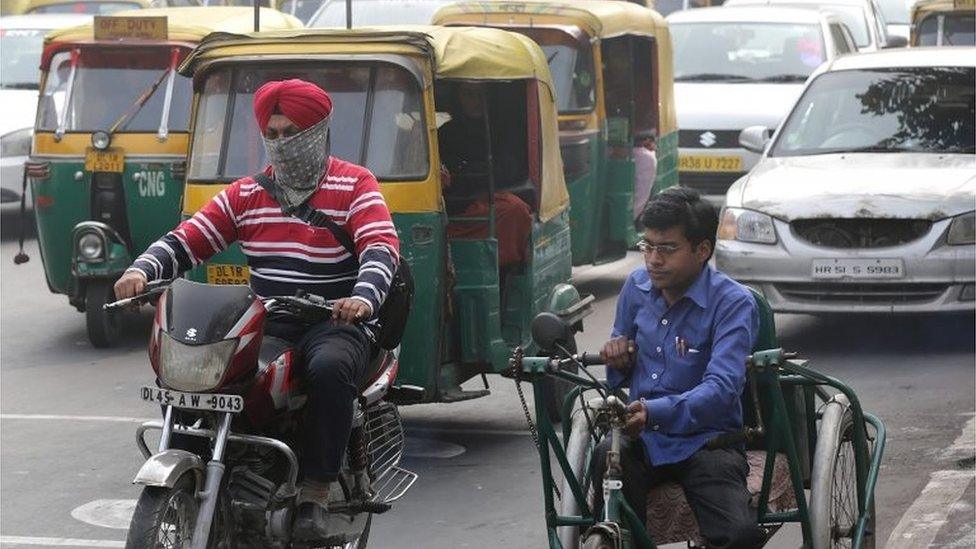
If the Indian government really wants to tackle pollution it is going to have to do a lot more than just cut car numbers in the city
But the biggest challenge may be summoning the political will to take serious action.
The traffic restrictions were brought in by the city authorities. Delhi is run by the Aam Aadmi Party, a bitter rival to Indian Prime Minister Narendra Modi's Bharatiya Janata Party (BJP).
The BJP has already dismissed the anti-pollution drive as pointless.
"If you are interested only in headline grabbing, then I can give crazy orders, but if you want real solutions, then real solutions lie in improving the quality of fuel and improving the quality of the engines of cars," Prakash Javadekar, India's Environment Minister, said.
I suspect that means that one of my children and I will have to continue to take the steroid inhaler that keeps our asthma under control for some time to come.
- Published5 January 2016
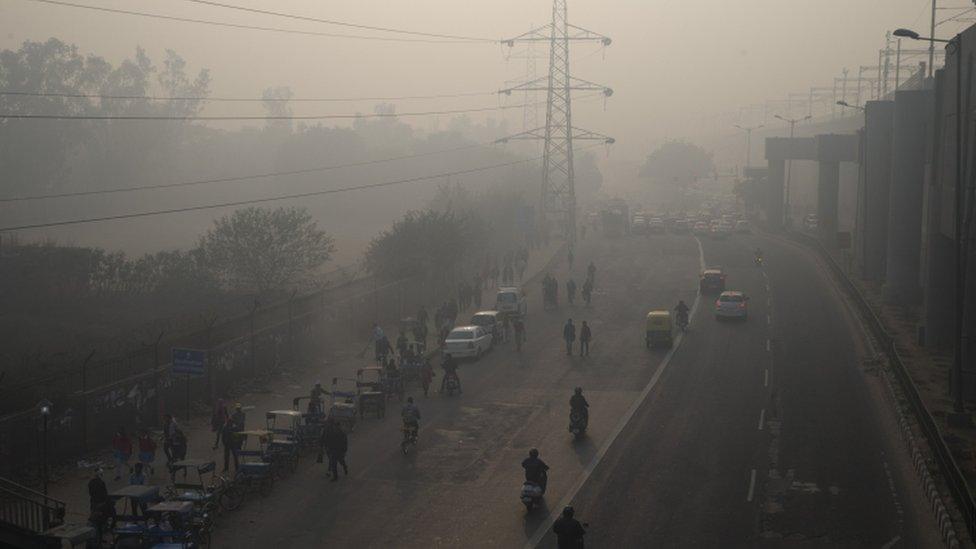
- Published31 December 2015
